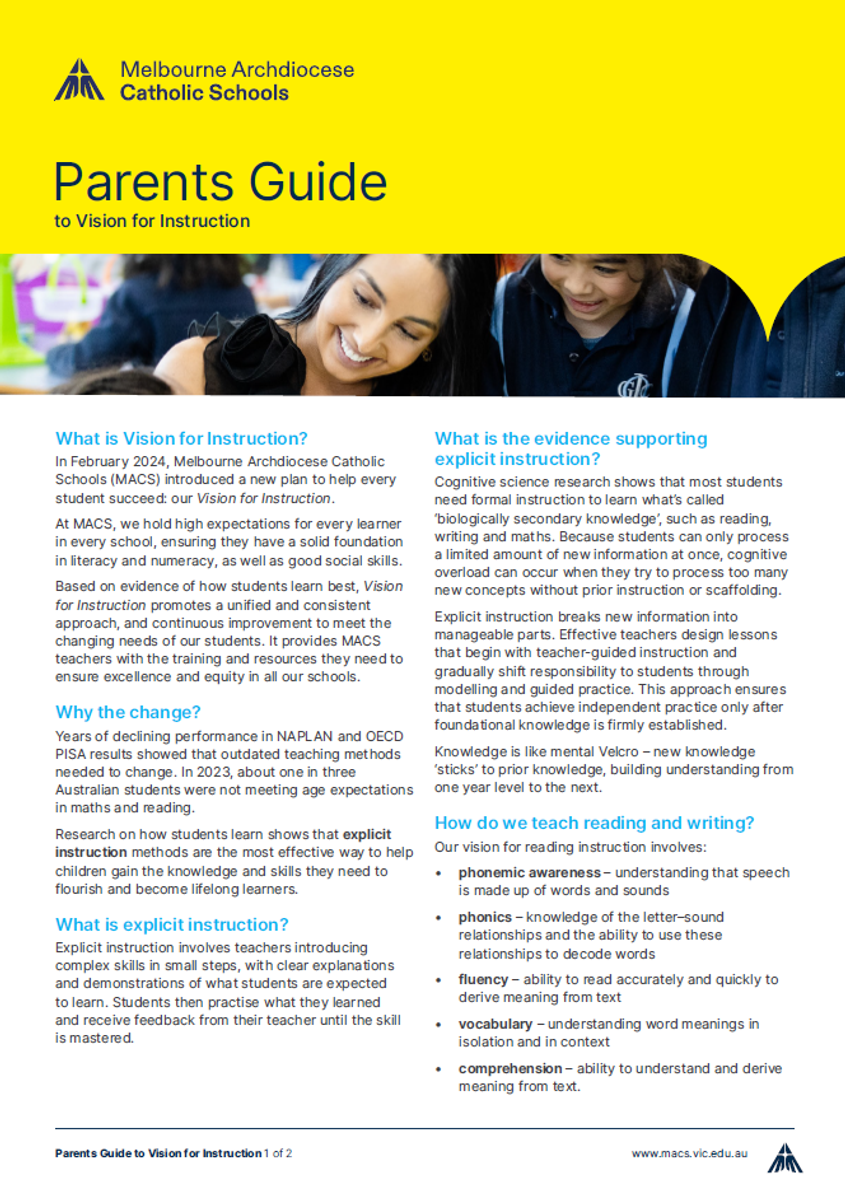Principal's Report
A Message from Julie..

Principal's Report
A Message from Julie..
I would like to thank the families for supporting the change to the use of the school car park in the past week. However, I would like to provide more detail relating to the schools' decision to close the school car park at the commencement of the school day at 8:45am.
A risk assessment has been completed after some concerning incidents were identified by staff and community members. While supervised, the car park functions safely however, once staff are no longer supervising the area, the movement of children and cars is concerning. We ask all families to consider the safety of our students in making this decision. If you have any questions relating to this decision please contact me via email at jmcdougall@stjmern.catholic.edu.au or please make an appointment at the main office.
We are excited to continue working as a team to support all students at St Joseph’s in reaching their full potential and thriving in a positive, inclusive environment.
Finally as we approach the end of this term, we bid a warm farewell to Rebecca Oszkinis as she embarks on her maternity leave. We wish her all the very best during this exciting time and look forward to hearing all about her new adventures.
At the end of Week 2 in Term 2, Carla King will also begin her maternity leave. During this time, Nicole Smith will take over her class full-time. We are confident Nicole will continue to provide excellent support and guidance to her students.
Additionally, Ryan Marnell will be on leave starting Week 10 for a placement that will run for five weeks. During Ryan's absence, Chris Borg and David Thompson will step in to cover and ensure continuity in the classroom.
We appreciate the dedication and hard work of all of our staff, and we know that their leave will be a well-deserved break. Please join us in wishing them all the best as they embark on their new journeys!
Julie McDougall
(Principal)




At St Joseph’s, we are excited to share with families our Vision for Instruction as part of the MACS 2025 Focus. This vision is designed to provide clarity and structure around our approach to teaching and learning, ensuring all students are supported in their academic journey. One key aspect of this vision is our emphasis on Explicit Instruction, which follows a clear sequence to support student learning and mastery.
The sequence begins with the introduction of new content and skills, and effective teaching generally follows this progression:
This sequence of instruction is designed to maximize student success by providing clear, structured, and supportive learning experiences. By following this approach, we aim to help all students develop deep, lasting understanding and a love for learning.
We look forward to continuing this journey with our students and families as we implement the MACS 2025 Focus!
We are also excited to introduce our TACS (Team Around the Child), a dedicated group of senior leaders focused on ensuring that every student receives the support and guidance they need to thrive. This team includes our senior leaders in Wellbeing, Learning Diversity, Learning and Teaching, as well as the Deputy Principal and Principal. Together, we work to provide a comprehensive approach to student development, addressing academic, behavioural, communication, engagement, health, and wellbeing needs.
The TACS team focuses on implementing Multi-Tiered Systems of Support (MTSS), a framework designed to ensure that each student receives the right level of support in all aspects of their learning journey.
MTSS is a systematic, continuous improvement framework that utilizes evidence-based, high-impact teaching practices to meet the diverse needs of all students. It ensures that students receive appropriate levels of support, instruction, and adjustments to be successful across the key areas of learning, behaviour, and health and wellbeing.
While the three tiers of support are organized in a framework of increasing intensity, they are interconnected and complementary. This means that interventions occur across all tiers and in all areas of student development, with support being offered at the necessary intensity and frequency. Whether a student is below, at, or above year level, or has complex learning needs, our MTSS approach ensures they are supported in all aspects of their development.
By offering support at varying levels, based on progress monitoring and data analysis, we ensure that no student is left behind. Under MTSS, every student is empowered to grow and flourish, regardless of their starting point. This framework provides the flexibility to meet the diverse needs of our students, enabling them to participate fully and progress in their learning, health, and wellbeing.